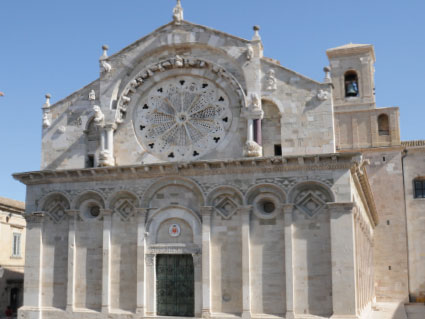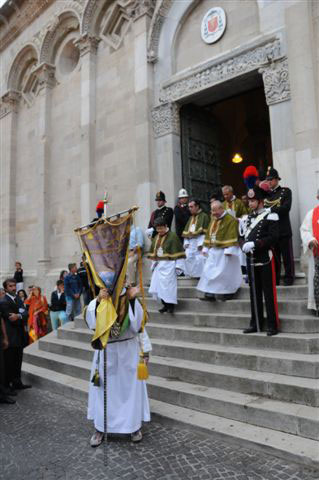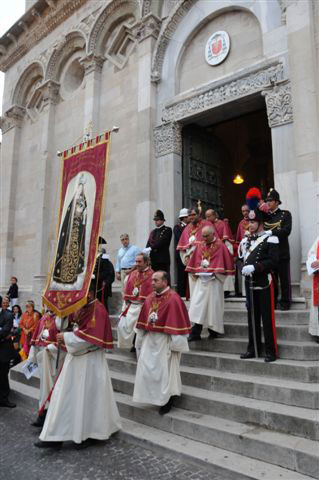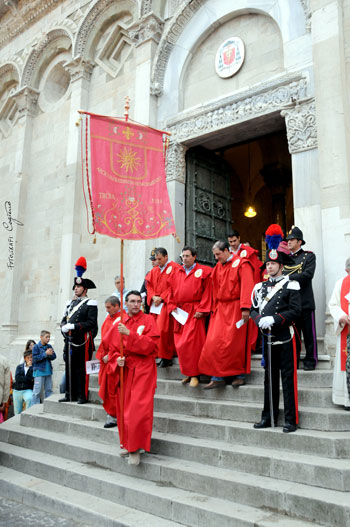





Instituted by the Bishop Stefan Grube (1474-1480), originally from Latvia and a member of the Teutonic Order, the Confraternite dell’Annunziata e di San Leonardo were formed with the aim of providing hospitality to the pilgrims who passed through Troia on their way along the Appian-Trajan Way towards the sanctuaries of Monte Sant’Angelo and of Our Lady Crowned. The confraternities played an important social role, also accompanying the deceased towards their resting places and taking care of abandoned babies. The “Ruota dei Projetti” or “Wheel of the Rejected”, the revolving mechanism on which such babies were placed, can still be seen today in Via Municipio. The boys were raised and given the opportunity to learn a trade, while a dowry was provided for the girls. Over the centuries membership numbers of the two confraternities dwindled, and it was not until 2004 that the ancient partnership between the two was re-established. The members, dressed in sackcloth with a green mozzetta and a medallion, accompany the statue of the Miraculous Crucifix on Good Friday.

The Confraternita della Stimmate di San Francesco e della SS. Addolorata was founded by the Bishop Emilio Giacomo Cavalieri on 9th April 1699. The aim was to promote the cult of Saint Francis of Assisi and of the Virgin of Sorrows, take part in the most important processions, carry out works of piety and provide for the funeral services and suffrage of members upon their death. The Confraternity adopted a more flexible statute in 1915, and in 1923, building work began on its Cemetery Chapel. During the last century, because a dignified burial was assured, the number of members rose significantly. Over the last decade, changes have been brought to the image to the Confraternity, members of which now wear a white robe, dark red mozzetta with a gold border and Franciscan arms. The Confraternity takes part in the Holy Week processions, carrying the image of Our Lady of Sorrows.

The Arciconfraternita del SS. Sacramento was founded by the Bishop Giannozio Pandolfini (1484-1519), with the aim of keeping alive the cult of the Eucharist in the Cathedral of the town, taking care of the solemn celebrations held on Holy Thursday and Good Friday and of the Corpus Christi celebrations, and to keep the oil lamps alight on the altar. The Brothers were to number no more than twenty, and had to belong to the upper classes. The Confraternity immediately obtained the Indulgences of the Most Holy Sacrament from Pope Leon, granted to the Confraternity of the same name based in the Basilica of Saint Lawrence in Damasus in Rome. The title of Archconfraternity was granted on 22nd April 1550 by Pope Julius III. The Confraternity was granted a chapel in the old sacristy of the Cathedral, and a statute was drawn up governing its shape, how donations for decorating it were to be administered, and how Brothers and Sisters and indeed canons were to be buried.